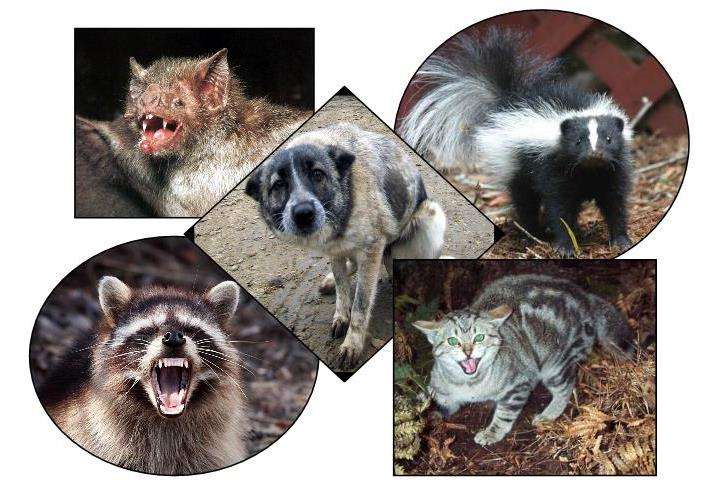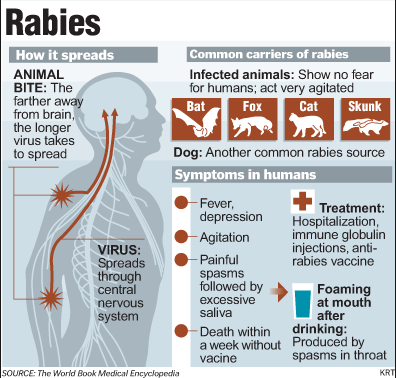
June is the month when all the animals, pets, barn cats and horses, on the farm are vaccinated for rabies. If all your pets and livestock and every single animal you come into contact with are vaccinated according to veterinary guidelines, you can stop reading now. However, if not, you need to know how rabies spreads, how to recognize it, how you can prevent it, and what to do if you suspect it.
Do you understand the transmission of rabies? The most common rabies hosts include bats, foxes, raccoons, skunks, bobcats, cougars and coyotes. Infected, or rabid, animals transmit the rabies virus via saliva when they bite or when the saliva gets spread through skin wounds or mucous membranes such as eyes, mouth, or nose. The rabies virus travels through the peripheral nervous system to the brain, where it attacks the central nervous system.
Although rabies isn’t widely found among livestock, the potential risk of human exposure from even one infected horse, cow, goat, etc. can be significant. The nonspecific early signs of infection can delay correct diagnosis and potentially expose handlers, caretakers, owners, veterinarians, veterinary technicians and anyone else who handles the animal. Even though the change of one of your animals contracting rabies is small, the implications of a rabies infection that occurs in your barn are significant. Infected animals show signs anywhere from two to nine weeks following exposure and once signs appear, the animal invariably dies within three to ten days. In more aggressive cases death can come within hours.
Early signs in horses can be easy to mistake for mild colic or unexplained lameness. Even the advanced signs in horses can be similar to more common diseases such as Eastern or Western Equine Encephalitis, West Nile virus or EPM (Equine Protozoal Myeloencephalitis). If other neurologic diseases have been ruled out and the horse has an unknown vaccination status and/or suspected exposure to a rabid animal, rabies should be considered as a possibility.
Other early signs of rabies may include:

- Decreased appetite
- Depression
- Incoordination
Advanced signs may consist of:
- Drooling and excessive salivation
- Extremely aggressive behavior in a normally docile animal
- Facial paralysis
- Hypersensitivity to touch
- Inability to swallow
- Jaw clenching
- Lack of awareness of limb location
- Limb weakness
- Localized itchiness
- Overreaching movements
- Repetitive twitching
- Self-mutilation
Because most livestock spend at least part of their time outdoors, they are more likely to come in contact with wildlife. But by taking a few simple precautions, you can reduce their risk of a rabies infection:
- Have all animals (not just your pets) that could potentially be exposed vaccinated.
- Secure your pet food indoors to minimize the scavenging habits of potential rabies hosts, such as coyotes, skunks and raccoons.
- Remove garbage and other attractants from your property.
- Block off nesting places for hosts, such as openings under houses and other buildings.
- Be alert for wildlife that might be acting strangely. If you see anything suspicious, report it to your local health department.
Rabies is a scary disease because it can manifest in many nonspecific ways and is always fatal within a few days of showing signs becoming apparent. It is common sense to avoid wildlife that is acting strangely, but jumping to the aid of any of your animals, regardless of possible health risks, can be tempting for all farmers. Be cautious and remember that rabies is easily preventable if you have your animals vaccinated each year according AAEP recommendations – that means pets, companion animals and livestock.